A to Z of Amazing Critters
A Creatures
Amphis
Amphies are one of the most horrific animals in the Yonderverse, and a great way to kick off this long list of critters. Hailing from the planet Adamne, amphies grow to adulthood in just a week and when they do, they target the largest of monsters in the toxic oceans. These monsters are torn limb from limb, stitched on, connected to the amphies nervous system and given a semi-functional brain, and used to hunt prey. Amphies are immobile and are glued to the seabed, and so they rely on these stitched on body parts to hunt more efficiently.
We used to have an amphis without an additional "appendage", but unfortunately somebody felt bad for it and jumped into its enclosure and subsequently got ripped apart and stitched onto its back.
...We had to euthanise it. That's the biggest issue with unattached amphies, they secrete some kind of chemicals in the water and air that makes creatures want to go near them.
Anas
These five-legged snakes of Xiskin have only one eye on the tops of their heads, as they sit upside down on branches, ready to drop down onto prey. They dangle their heads down, using their four large ears sat radially around their skulls to listen in on prey from any direction.
These creatures are harmless to medium-sized and larger sophonts, and for that reason their enclosure has a path in the middle people can follow. For safety reasons there is a netting over the pathway in case of anas attacks, but they are incredibly rare. We also occasionally offer baby anas handling, as these weird little animals have no teeth as babies and so could not harm a fly, even if they tried. If you'd like to visit these animals, head to the Xiskin Rainforest 2 Sector, where you'll also find the tremendously terrifying treetop turtle enclosure, another treetop carnivore that likes to drop down onto prey.
Armoured Ibis
The first herbivore on this list, armoured ibises are known to be absolute brutes. Reaching heights of around three metres, they reside on the moon Two orbiting Echos. No predators go after armoured ibises as it would be a waste of energy, and they'd most certainly be pulverised in battle. In fact, the armoured ibis's defensive move of choice is to pin their opponent down and sit on them. After all, they're one of the only solid-boned birds on the moon, flightless, fast, and very heavy.
Our armoured ibises are so docile we let small children and people ride on them. These animals make the most delightful chirps when in good company, which is why we encourage letting your children ride on the ibises for a short while for the short fee of approximately £200.
Aytheira
These golden-furred creatures are skilled predators, flying through the floating islands of Jynx a planet in the same solar system of Adamne, home to amphies. With a prehensile tail, wings and webbed feet, these animals are capable of hunting in absolutely any environment. They are most known to flit through the forested islands, preying on all manner of birds, mammals, amphibians, reptiles, and especially insects.
Unfortunately these animals are too dangerous to have a walk-through exhibit, but our talented zookeepers are working on making our three aytheiras more comfortable around people, so one day we can turn their enclosure into an interactive one. Currently two of our aytheiras are rather bitey, which simply will not do.
B Creatures
Brass Whale
Brass whales are an untouchable cetacean species from the Inner Ocean of Dave, an oceanic planet without a core. These animals have skin so thick they cannot be punctured by any animal, aside from one. Wraths. But brass whales have a lovely relationship with another apex predator, stalkflies. Brass whales slurp up the sulphur of the Brim Stone, unearthing tons of animals that stalkflies feed on.
Due to the size of brass whales we only have two. They have the largest enclosure in the Deep Oceans 9 Sector, a 10 trillion gallon tank with telescopes just to see from one side to the other. The brass whales are hard to spot, but when you do it is a spectacle.
Bergaias
Bergaias are a burrowing fish species that live inside icebergs on the planet Iries. These tiny fish go unnoticed to predators, which makes these tiny creatures expert hunters. Instead of chasing prey or carefully stalking them, bergaias like to hitch a ride on large marine animals and slowly eat them. By secreting a numbing chemical, bergaias use their circular jaws to slice the flesh out of prey. Because they are so small it is rare for these fish to cause significant damage to an animal, but it has been seen.
If visitors want to, you can get a permanent bite mark from a bergaias. It was nightmare getting this approved, but one can be bit by these fish and it will leave a beautiful scar mark. It won't cause any pain, or any harm what-so-ever. Totally worth it!
Bamboo Turtle
A turtle species from Puriena, bamboo turtles are not even a centimetre in width. They hollow out marine bamboo and live inside, slowly breaking it down as they consume the bamboo from the inside out. These animals have beautiful yellow and brown stripes across their shells, and on their native planet they are killed and used as apparel.
Our bamboo turtles live in the same bamboo they would on their native planet, only we have installed windows for people to see inside. Bamboo turtles are very easy to take care of and the sophonts of Puriena often do, as bamboo-shaped vivariums are cheap to build and buy.
C Creatures
Cordys Goat
Cordys goats are some of the more, unusual of domestic species we have here. That's because they're not domesticated at all, the people of Finisiris just have a really weird relationship with them. Zookeepers at our zoo discovered that interacting with a cordys goat too much means they develop a taste for you. We have lost a few zookeepers, rest in peace, to cordys goats. It's okay though, because our cordys goats at the Cordys Goat Petting Station smell so many visitors that they are desensitised and cannot latch onto a single person's taste.
Cordys goats have a parasitic relationship with a predatory fungus species, hence the name. The goats lose all their senses while the fungi control their brains. Generally, these goats under their influence are harmless, but as previously stated once they've developed a taste for someone they will hunt them down. The people of Finisiris lack any taste, which is why they're able to keep cordys goats as livestock and why we thought they were safe to be around.
Crimson-Bellied Bat
These flying mammals of Rubrinea are the largest bat species on the planet. These crimson-coloured animals fly at speeds of 60 mph, making them one of the fastest animals on the planet. Living in colonies of up to a thousand, they reside in only the largest of cave systems around the planet.
Their hearing is unmatched, with ears almost a foot long they can hear for literal miles. Crimson-bellied bats are omnivorous, using their hearing to target small bird and mammal species, while also using their poor eyesight to spot brightly coloured fruits.
We have a flock of 37 crimson-bellied bats. They are a recent addition, and we are working on forming some breeding pairs so we can expand our colony. To see more about our breeding programme, see here.
Cranalis
The thick headed cranalises of Theyam are so territorial that the highest cause of death is cranium-related. Cranalises ram at each other, head first, in the hopes of scaring each other out of their homes. What happens most of the time is they do not realise their own strength and end up causing serious damage, and often death. Outside of fighting cranalises are very relaxed and spend most of their time feeding in large herds, grazing upon large fern-forests.
Our cranalises are unfortunately kept separate due to fighting, resulting in several deaths. They can still communicate through wire fencing, but they do not dare attempt to break the fencing. This was unfortunately a last resort, and for all animals we try every other tactic to keep each other together. Sadly sometimes it is just not possible to keep conspecifics together, and we do have to separate them.
Cxry
Cxries are some of the cutest animals we have in the A To Zoo. These adorable mice-like creatures live in pockets of sulphur deserts on a remote space bubble somewhere in District 1. These muddy-brown monsters terrorise the local insect life, trying their hardest to catch as many small invertebrates as they can and resort to eating seeds when they can't catch anything.
They get very grumpy when they can't catch insects, much to visitor's amusement. We even give them slow, flightless insects but sometimes they can't even catch those. We have quite a few cxries running about in tubes and tunnels around the Domestic Minifauna 1 Sector.
D Creatures
Do'ai'do
Winged predators of the rainforests of Talerin, Do'ai'do are giant avids. These animals stomp through the forests, with legs up to four metres tall, disguised as thick bamboo. Their dim plumage is elevated by the tips of their tail feathers, with striking greens and yellows.
At the A To Zoo we let our do'ai'do hunt live prey; genetically enhanced rats that do not feel fear or have any nerve systems. This prevents rats from feeling any harm, and so is completely ethical.
To hunt, do'ai'do wait silently in the rainforest, as still as possible to represent the abundant bamboo in their natural environments. When prey walk by, they slowly lift up one of their legs and slam it down into their prey, spearing them and making an easy meal. They are very top-heavy, and so to not topple over they will wrap their heads on a thick branch.
Death Pig
These interesting animals are kept as pets on the planet Osao, despite their aggressive nature. Death pigs are completely harmless; they lack teeth, instead squishing prey with tongues. Death pigs have an incredibly bright colouration. While different morphs are greatly varied, they never stray too far from bright pinks and yellows.
We have a handful of death pigs at the A to Zoo, but they do not live in an interactive enclosure like so many animals do.
Daraxad
Daraxads are small beetles found in the dead forests of Hell. While larger animals fight endlessly with each other over territory, food, mating, and all manner of other reasons, the daraxad live peacefully just below the surface, tunneling away to form complex nests. With six simple, compound eyes sat on long spindly stalks, daraxads are one of the freakier insect species on Hell.
We have a very interactive daraxad enclosure here at the zoo. Their glass-walled enclosure is transparent from the outside and opaque from the inside, so visitors can see all of the tunnels and rooms while the beetles are completely oblivious.
Dyri
Dyris are a small cetacean species, native to the indigo lakes of Lemmasa. They have a bright purple skin, with flecks of bismuth and indigo sticking out of the tops of their heads, backs, and tips of their fins. These herbivorous whales chew endlessly on giant misty kelp leaves, as they contain practically endless nutrients and can provide a dyri with enough nutrients to last a week.
When we discovered Lemmasa and the dyri we learnt of these misty kelp, and their rarity. We have a special misty kelp farm where we grow thousands at once, and use to feed many of our large herbivorous cetacean species.
E Creatures
Evereai Cat
These small wild cats of the plains of Everer are prolific... herbivores. These nine-eyed animals have 360° vision, thanks to their heads which can swivel a full circle. By appearing as a carnivore, evereai cats are not hunted by many other animals. They prowl the grasslands in search of the tastiest of grasses, which usually grow on the sides of small cliffs, hills and mountains.
These animals require large territories, and their enclosure is one of the largest compared to their size. We have five evereai cats at the A To Zoo; three females and two males. We are trying our hardest to form a breeding pair of these cats to no avail. Sadly, evereai cats are on a steady decline in their natural environments.
Emberwing
Emberwings are some of the most gorgeous butterfly species in the entire Yonderverse. With glowing ashy wings, emberwings flutter through the ebony forests of Uriti. Seen in only tremendous flocks in the sky, they spend most of their days hanging upside down on trees, disguised as perfectly still leaves.
Our emberwing exhibit features a large ebony tree in the centre, where our butterflies typically rest. Once an hour the ground underneath the tree is programmed to shake for a few seconds, causing the butterflies to erupt into an ashy flock. Is this ethical? We think it's fine.
Erevin
Hidden amongst the thick foliage of the sandy forests on Deseri are the erevins. These monolithic crustaceans grow constantly for hundreds of years, until they grow so large they simply cannot sustain their own lives. On the backs of these crab-like creatures form entire hills. As they shuffle through the sand, debris forms on their shell which grows over time as the erevins themselves grow. See a random dune in the forest on Deseri? It's probably a dead erevin.
Here at the A To Zoo you can walk amongst our erevins, as they are a free-range animal in the Desert Crab Sector.
Emyth
Emyths are the most enchanting of passerines in the song-filled forests of Theria. Emyths produce a melodic song from their long, curved beaks, by rattling it together. Emyths are seen as a symbol of luck for the people of Theria, as wherever they go, things seem to turn out well.
These birds can be found in the large walkthrough aviary in the Theria Rainforest 3 Sector. These birds typically sit near the three fountains, where they drink water with their heads tilted upside down. We currently have approximately 50 emyths, constantly laying eggs.
F Creatures
Firepede
Another terrifying invertebrate, firepedes call Hell home. These animals are so feared by the Karkhalan workers on the planet that factories go into lockdown whenever a firepede is detected within a certain radius.
Our security is much too advanced for us to worry about a firepede escaping. In fact, our firepedes are rather docile; zookeepers can freely walk in there and cuddle with them.
Frilan
Frilans are a peculiar little owl species from Talerin with a unique hunting method. When digesting food they manage to take out every single nutrient, turn the bones, fur or feathers into an acid and regurgitate it on their next victim. Scientists are not quite sure how, when and why frilans developed this hunting tactic, but it is certainly an effective one.
You'll probably find our frilans resting on branches, disguising themselves as a broken branch or tree stump. While they try their best at camouflaging, their giant beady eyes do not help - especially in the daytime, when they glow a bright white and gold. Frilans are yet another species we are attempting to breed, sadly to not much avail.
Fire Biscuit
While many insect species inhabit the rainbow forests of Paraseian, none are as colourful and as dangerous as fire biscuits. Their shiny shell coating is covered in miniscule scales that writhe and wiggle, slowly shifting to form new hypnotic swirls and patterns.
Fire biscuits get their name from the spicy crunch when they are roasted by the native peoples of Paraseian. Once their venomous stingers are removed, they make delicious snacks. Fortunately at the A To Zoo they are treated as equals, not food.
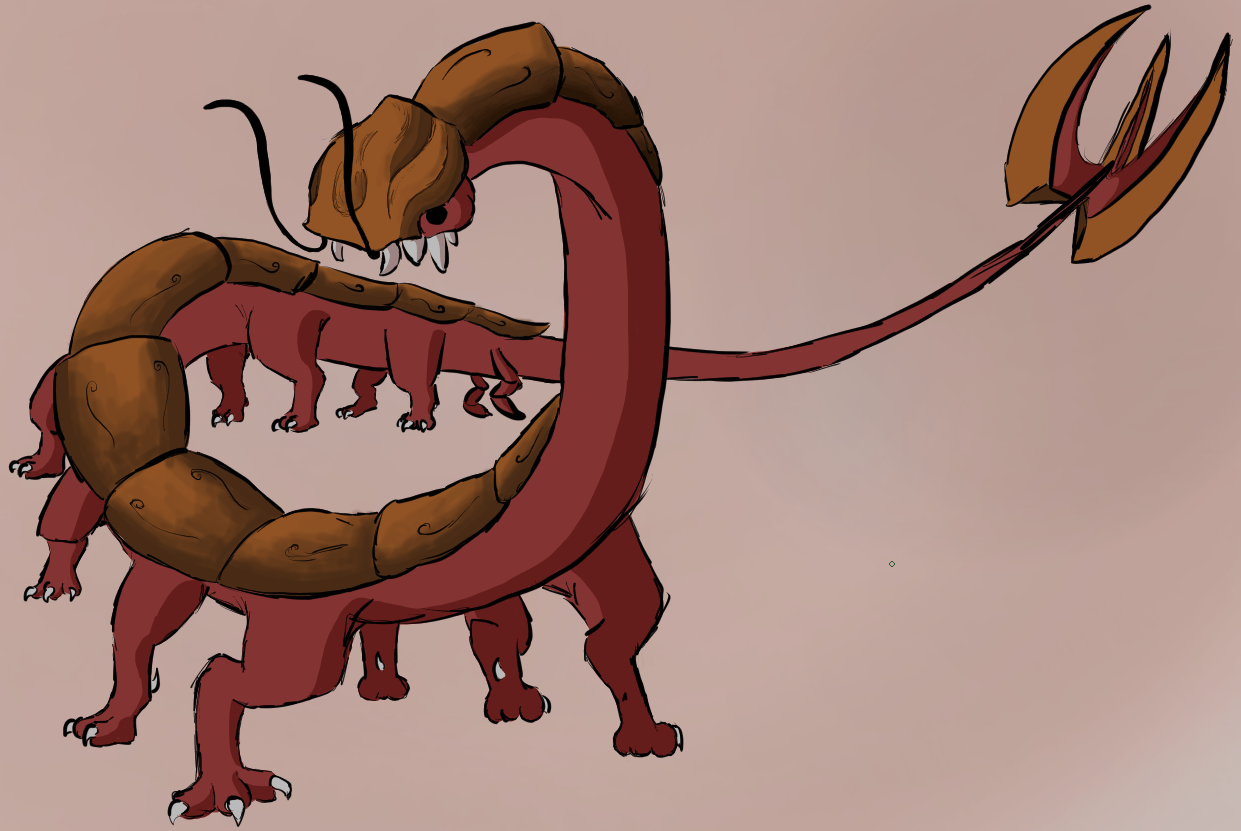
Forest Sword
Forest swords, also known as rootdeer, are a small herbivorous mammal found in the dark forests Uhduan. These deer are small, fast, and have incredibly thin, sharp heads that let them slice through thick bushes when they run. Their hide is very thick, preventing sharp foliage from cutting them. Their heads can also be used to defend against predators - they have few anyways; because of their size they are insignificant to most.
Our six forest swords inhabit a large forest enclosure with several other herbivore species. These animals are solitary but do not have specific territories, and get along with their enclosure-mates. We have one breeding pair of forest swords, and are looking to form more.
G Creatures
Grass Stalker
Grass stalkers are one of the most menacing predators of the forests of Aeandith. These ferocious predators have a dim plumage for effective camouflage. Grass stalkers are the largest flightless bird species on the planet, and spend most of their time hanging around in the canopy, jumping down on large prey to peck them to death.
In the A To Zoo we have five grass stalkers, all running through a large canopy enclosure shared with trombonks. Our grass stalkers are yet another animal we are trying to breed, as their numbers in the wild are decreasing.
Ghelito
Ghelitos are large herbivores of the blue savannas of Melriph. One of the largest land reptiles of the planet, ghelitos reach lengths of 10 metres as adults. Their square teeth are perfectly designed for shearing grass to eat, and if necessary they can ram entire trees down using their sturdy skulls.
We have four ghelitos in a grand savanna multi-species enclosure. They co-exist in this encosure with the same species they would in the wild, as well as a few smaller animals from other planets.
Gust Crab
These insects have six legs and are honorary crabs. Colloquially known as gust crabs, these animals are actually closer related to ticks. These invertebrates live in the boiling deserts of Julios; their weightless bodies get carried in the winds as they travel many miles across the sands.
Gust crabs were rated as the 51st most entertaining animal in a poll from the last New Year. According to those who submitted, gust crabs rolling around their enclosure, and carried away in the wind-machine-controlled wind is particularly entertaining.
Glacial Wolf
The glacial wolves of Greenerth would be a perfect predator, if almost all of their senses weren't lacking. Built to withstand the coldest of climates, running for days on end, swimming across oceans, glacial wolves have terrible senses of smell, hearing, and eyesight.
Our glacial wolf enclosure helps these animals with that. There are few obstacles that these animals could potentially run into, as well as the walls and fences of the enclosure padded with thick foam in case they run into it.
We are trying our best to breed more glacial wolves, as they are too decreasing in numbers in the wild.
H Creatures
Hallerisaurus
Hallerisaurus is a semi-aquatic dinosaur species, one of the few bringing the clade Dinosauria back from extinction. While the majority of dinosaurs come from Earth, hallerisaurus can be found in the coastlines of Dracosei. The few dinosaurs on Dracosei diverged from dragons several million years ago, and have fluorished as flightless megafauna.
Hallerisaurus is omnivorous, feasting on algae and seagrasses growing on the shallow rocky seabeds, while also hunting small invertebrates and fish. In the A To Zoo we have a herd of twenty hallerisauruses in a large coastal enclosure alongside many marine bird species. Visitors can walk through tunnels through a large cliff face, or walk underwater and look up to see hallerisauruses eating and playing with others of their herd.Hermit Vulture
Hermit vultures are of the most ridiculous animals on the planet Iith. These birds spend their entire lives in a tightly knit ball of moss, that they constantly expand over their lifetime as they age and grow. This moss ball gives them the "hermit" part of their name, as they never willingly leave it.
We have three hermit vultures, and we give them a constant supply of moss, sticks, feathers, mud, absolutely anything they could possibly need to expand their moss home. Our hermit vultures live in a tropical rainforest enclosure, with trees reaching about fifty metres tall. Every night, the vultures sleep together on the ground floor, stacking together to form a large mossy mound.
Hammertruckle
Hammertruckles are one of the many unusual fish species from Hothiri. These animals have a hammer shaped head, with an eye on both ends allowing them to see above and below them as they swim in the open oceans. Their dark blue colouration helps disguise them from predators - not only that, they can reach speeds of up to 50 mph to flee.
You can see our collection of hammertruckles in the Open Oceans Sector 5, where they live with a number of other large fish species. You may need to use a telescope to spot these hammertruckles. We have special telescopes that can focus in on our animal species, and even highlight them, making things easier to see.
Horned Hellspawn
Yet another species from Hell and a subspecies of hellspawn that have rightfully earned their spot on this list, horned hellspawn are coated in spikes and stubs that can fire out of them at will. A defense tactic used only in times of distress, the spikes along their body are made of a rapidly regenerative bone infused into their spine, ribs, legs, arms, tails and skulls, and when fired snap off.
Luckily, our horned hellspawn have never fired their spikes at any zookeeper or visitor. We treat our animals with respect, especially these animals when their defense tactics cause them great amounts of pain and suffering.
I Creatures
Igelehn
The friendliest of creatures from Osao, get on an igelehn's bad side and it will chase you down until it has stomped you deep into the ground. Many slimes choose igelehns as transport, thanks to their ability to carry several tonnes (slimes weigh next to nothing, anyways) and their incredible speeds and stamina.
Igelehns are valued as pets thanks to their cuddly natures and friendly personalities. As long as you are kind to your pet, they will admire you and even die in battle for you. We have twenty igelehns at the A To Zoo, however they are not in an interactive enclosure out of fear that some visitor will accidentally get on one, or even worse all, of their bad sides.
Ichor Anaconda
Ichor anacondas are a terrifying snake species found deep inside of Man, a gargantuan floating corpse in District 3. Ichor anacondas are seldom seen by tourists, but they live in their millions, swimming inside the ichor-filled veins and arteries of this giant being.
Don't ask how, but we managed to completely replicate their natural environments, even filling large transparent tubes with real ichor. Ichor is incredibly rare and impossible to buy, so it took us an incredible amount of time and effort to find people willing to sell us it. Our anacondas have an enclosure stretching the entirety of the Man Sector, the tubes following pathways both above and below visitors as they walk past other enclosures.
Ice Lynx
A mammal species calling Daglaci home, ice lynxes are small predatory felines. Ice lynxes may be skilled predators, but they are hunted by a number of other dangerous creatures due to their diminutive size. They only reach about 10cm tall, but it makes them very good at avoiding predators by tunneling into the thick ice with their shovel like claws.
Our three ice lynxes live in separate territories in the same enclosure. They are solitary animals, but every so often will congregate to have a scrap or two. They never cause injuries, but instead fight to grow stronger. Not that there's any need; their enclosure has no other species inside.
Ineine
Ineines are small passerine birds from Iakasu, a planet in District 3. These aggressive birds dive-bomb their prey and literally explode, reforming themselves with their magnetic body parts. Nobody is quite sure how these animals survive exploding, or how they reform themselves, but they are a creature to fear because they can take down prey a million times their size.
We ask that only mature adults who aren't squeamish visit the ineines. They often like to dive-bomb our glass windows, and in the past we have had many people pass out from the gruesomeness of these animals.
J Creatures
Jasper Horse
The most commonly domesticated horse breed in the Yonderverse, jasper horses are extremely fast, strong, and have incredible stamina. They are used across the galaxies to carry cargo, for travel, and for fighting. These incredibly versatile animals have no native environment, and have existed for billions of years, not having evolved since they first appeared.
Our herd of nineteen jasper horses roam about the various Sectors. You'll be lucky to spot one; they have been given free reign of the A to Zoo Dimension. They're so big that entire cities can sit on their backs, yet they mostly stay relatively far from most Sectors. We have trackers on them though, just in case they wander beyond all of our Sectors and into the unknown.
Jvarl
Jvarls are small cetaceans from Civino. These animals are incredibly intelligent, and they have the largest brain of any animal compared to their size. Jvarls range in colours, but typically boast a warm pink palette. They are never seen without a mate, and find their perfect partner as soon as they're born.
Our eighteen jvarls have lived with us for twenty years. All of our animals arrived at the same time, and were an entire pod on their native planet. We have a great variety of pink, purple and red jvarls, and we are hoping to optimise their enclosure soon to try and convince our nine pairs to have babies.
Jelly Eel
These gelatinous fish come from the planet Cilvarth. They're very small and only live in a small underwater crater known as the Tea-Pit.
You can find these in many rock-pool exhibits across sectors. Bring some food and you can feed them! They're very friendly, and might even enjoy a pat on the head too.
Jade Horse
There are thousands of equine named after gems and precious minerals, so we thought it would be funny to include quite a few. Jade horses are not nearly as impressive as jasper horses. These miniscule horses reach about a foot tall as adults, and are kept as pets by the Iviir on Kaari.
Located in our Domestic Minifauna 5 Sector, if you've purchased mineral seeds from our Food Stalls you can come and feed our jade horses. These friendly little animals love a good snack from strangers, and they are very trusting too. However be nice, because they're paired with melonhorns, a terrifying horse species that are very protective of their jade horses.
K Creatures
Killfish
Hailing from the freshwater moon Killadan orbiting planet Dave, killfish are one of the most gruesome predators out there. While appearing as a cute, cuddly creature, behind those bulging eyes are stores of pure blood, ready to shoot out of miniscule holes at predators, at such high speeds it can slice wood in half.
We unfortunately had an incident with our killfish around the time they joined our collection. As it turns out, they view children as food, and so the killfish attempted to squirt its blood at a child watching it. It broke the glass and ate the child. The zoo really lost a lot of love when that happened, but luckily we smoothed things out with the parents and we reinforced the glass, making it so that the killfish cannot see through.
Khilope
An oceanic serpentine from Venviri, khilopes are filter feeders. Their mouths are large, but their pouch is larger. As they slowly glide through the quicksilver oceans, they take in millions upon millions of microorganisms while they show off their shiny baleen plates.
While their size may be daunting, these animals are completely friendly. The only reason that their enclosure is not interactive is because quicksilver, or mercury, is incredibly toxic to many people, and so we can't risk it. Especially when khilopes like to drink and spit out quicksilver in the air.
Kazan Bear
Kazan bears are the only bear species native to the planet Kazan. While you might expect them to be giant, menacing animals, kazan bears reach no more than a metre tall and are completely herbivorous. They relaxed natures, coupled with their simple diet of logs, branches and roots, makes them great company in the stone hill villages in the planet's rainforests.
King Heart Penguin
King heart penguins are a popular animal with the royalty on Ocearia. In olden times, king heart penguins were frequently hunted for their feathery coats. These coats were worn by royalty, but due to so many of these animals being hunted, they became extremely rare and laws were put in place to protect this species. It is now illegal to kill a king heart penguin, even in self-defense.
At the A To Zoo we appreciate when animals are protected. We promote the protection of endangered species, such as the king heart penguins. Come meet our penguins in the Flightless Birds Sector 6, where you can take a short class to learn all about the history of these birds.
L Creatures
Loxur
The most docile creature in existence, the loxur are magnificent creatures that roam the blue savannas of Melriph. They are used as transport, but not in the traditional way. Melriphians use rope, tied between the sails of these animals, and sling themselves around. Due to the shape and strength of these sails and the loxurs themselves, these slingshots can sling people for many miles.
Our loxur can be found in the Melriph Savanna Sector, where they live alongside the ghelitos and many other animals from this planet and a few others.
Lerain
Lerains, also known as the tuvalu needlefish, are a small fish species found on Earth. They are microscopic fish species and went unnoticed by humans until the very last year of their existence. These fish grow to a millimetre in length, and feed on microscopic organisms.
They have needles lining their backs, which shoot out when they are approached by animals deemed as predators. This includes humans, but the needles are so small they are just a nuisance, rather than any injury.
Lÿr
Lÿr are a species of predatory stone beetle from Ponriastea. These beetles have a vicious bite, capable of ripping the finger off a native sevesto. Lÿr are a dangerous creature, reaching a foot in height and in width, flying up to twenty miles an hour. Luckily, the sevesto can outrun them.
Our beetles are kept in a lush rainforest vivarium, over a thousand square metres, where they live in a small colony. They are a burrowing species and often sit on the surface, disguising themselves as large moss-covered stones.
Lumenar
The Legional Animal of Chromus, lumenars are magnificent flying big-cats. These animals stand at two metres tall; with four pairs of wings they dominate the floating island-filled skies. These animals hunt various other flying creatures, often engaging in aerial battles with other predatory animals.
Our lumenars have one of the largest exhibits for an animal their size. These creatures need huge amounts of space, and our thirteen million square metre exhibit is plenty for our ten lumenars to have decent sized territories.
M Creatures
Mud Whale
Mud whales are an incredibly powerful species of cetacean inhabiting the mudlands of Mars. These animals resemble the prehistoric basilosaurus of Earth almost exactly, except these animals live and swim in mud, as opposed to water. These aptly named animals are powerful predators, with senses designed for this thick, wady environment. Their specialty hunting method is to lie perfectly still and secrete a substance into the mud that turns it into a tar-like consistency, which they fling at prey that get too close to the mud's edge.
Our mud whales are given genetically altered live prey to catch, so visitors can witness the beauty of these animals hunting. Our three mud whales live together, and can occasionally be seen breaching the mud's surface as a sign of contentedness with their environment.
Maval
Mavals are the most common creatures found in the Ondomension. These devilish monsters use their bulbous heads to float through the air, filling it with helium they absorb from the atmosphere in its native dimension.
They love to play pranks on visitors, by hiding and jumping out at them to scare any passerbys. It usually works, and sometimes frequent visitors like to scare them.
Martephen
One of the most intelligent primates from Qrairzurre, martephens have an entirely black colouration. These stealthy animals live in the canopies, building small primitive villages made of sticks, branches, vines and leaves, all woven together to form housing complexes for all the animals in their colonies.
Come see our martephen village in the Rainforest Primates Sector 2, where you can throw up some treats for them.
N Creatures
Ned
Neds are a small marsupial species found across Earth. These animals seemingly appeared as soon as the human species went extinct leading many people to believe these, and many other species, went into hiding during human rule and have only started appearing as they died out.
These peculiar animals have fur that can reflect all light, making them appear invisible. Since we'd like our visitors to see the animals, their enclosure has artificial light that the neds cannot reflect.
Come see our collection of neds in the Marsupials Sector 9, but please be quiet as they are skittish animals.
Naval Bananawing
Naval bananawings are some of the most intelligent and graceful animals from the planet Eveian. These magnificent creatures are used in a handful of navies, as they can mentally connect with their riders, becoming an unstoppable pair. They are named after their banana-resembling wings, and funnily enough they smell of bananas too.
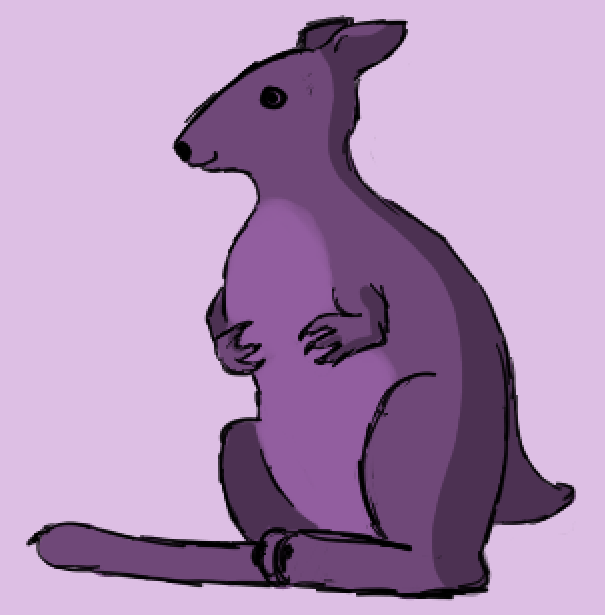
Noovlovovl
Noovlovovls are the largest bird species on the planet Nyphyr. These ten winged birds have four legs, each equipped with twenty talons. The noovlovovls are massive creatures, capable of creating tornadoes and hurricanes with single flaps of their wings. Luckily, they are on a planet with other megafauna and megaflora.
The noovlovovl enclosure is comparable to a Grade A spacecraft. It is so heavily reinforced that not even the strongest of trode bears could make a dent on the enclosure. That is great, since our trode bears have escaped before. They live in the Mega Birds Sector, with an enclosure the size of the continent Aecotia on Osao.
O Creatures
Ouroboros
Lurking around the very Edge of the Yonderverse are ouroboros. These magnificent creatures have shimmering scales that change colours faster than a person can perceive. They were one of the most difficult creatures to collect to add to our zoo, simply because they live so far out from civilisation.
Despite having ten in the zoo, we know almost nothing about these animals. They don't need to eat or drink, as proven by the fact they have done neither since arriving at the zoo a hundred years ago, and are still going strong. They apparently need no enrichment and are more than happy to swim about their gravityless enclosure, endlessly playing chase with each other.
Opal Phoenix
The largest of the phoenixes from planet Alfraph, opal phoenixes are stuff of legends. They are seen so infrequently that most doubt their existences. They are the main attractions in the Mythical Birds Sector 1, having an entire talkshow surrounding our single opal phoenix.
P Creatures
Petril
Sharing a similar anatomy and name as the petrels, petrils are a type of mega tube-nosed seabird. With a wingspan of fifteen metres, they are yet another type of megabird from the planet Sacaethea to scour the skies above the shallow oceans.
These birds are predatory and hunt in flocks, dive-bombing other large aerial species such as rocs and puffball eagles. Our seventeen petrils are found in the Murmurating Birds Sector 4, next to our european starling exhibit.
Paradise Kinkajou
A bright blue mammal from the kinkajou subfamily, paradise kinkajous are an arboreal species. They form a close bond with a conspecific from their juvenile stages, and never leave each other's sides until the day they both die.
These bright blue animals are endangered on their home planet Zechichi, and so we are breeding our three pairs of paradise kinkajous to hopefully increase their numbers.
Plump Poofer
One of the few flying amphibian species, plump poofers are a type of winged toad. These wings are merely advanced arms with wing-flaps, but these animals can sustain flight indefinitely thanks to their arms operating using recycled energy in their bodies. These toads are considered to be the next step in evolution for these animals, as they have shown to out-compete other toad species for food.
Calling planet Hydra home, plump poofers are a very rotund species. Since their bodies recycle energy, consuming food is more for appearance. They put on weight to appear larger to predators and have more of a chance to scare them off.
Phosphorous Snake-Eel
These animals are undeservedly hated on their home planet, Lendae. They may be an incredibly poisonous species, but they wouldn't dare bite anyone and prefer to run away when approached by danger. Phosphorous snake-eels contain a small layer of phosphorus compounds on their scales which produce an aposematic glow to deter unwanted predators. These animals are actively hunted in their thousands on their home planet, due to the somewhat irrational fears of them. We are not breeding our snake eels, despite us believing in repopulating endangered species, since if we released more of these eels they would just be hunted.
Q Creatures
Quiver Horse
Quiver horses get their name from their habit of quivering when they walk. Their unusually thin legs are an evolutionary advantage to traverse the thickest of the maze forests on planet Maloruno. Standing at a grand fourteen feet in height, they are some of the largest animals on the planet.
Stop by the Herd Herbivores Sector 4 where you can pay a small donation to ride these magnificent animals. Your kind donations will go to feeding these animals, so they may live another day.
Quered
Scientists can't quite figure out quereds. These animals have a nervous system like an animal, photosynthesises like plants, and have chitin plates like fungi. These biological mysteries are native to Cavotov, a planet who's species mostly live underground in giant cave networks.
Quereds are one of very few invertebrates to have nervous systems like vertebrates. Their bodies are made of thousands of miniscule segments, half of them equipped with a pair of simple legs for scuttling along cave walls and ceilings, to drop down onto aerial prey.
R Creatures
Raspen Mouse
Raspen mice are a genus of terries, in the terrisiformes order of the aurvada class. There are just two in this genus; the greater raspen mouse is the largest terry on the planet, while lesser raspen mice are half their length as adults.
Raspen mice are kept as pets by many jovians. Their small size, easy natures and simple requirements make perfect pets, especially when all jovians want to do is cuddle with their mice.
Radiant Frog
The largest animal species on planet Mike, radiant frogs grow to a whopping three inches in length. The skin of these amphibians contain millions of chromatophores which give them colour-changing abilities, similar to many other amphibians, reptiles, cephalopods and other animals.
You'll find our radiant frogs in the Rainbow Animals Sector 2, in a large multi-species exhibit alongside many other animals native to Mike.
Donate to the Zoo to support our countless species!
S Creatures
Snow Cow
Massive beasts from planet Greg, snow cows are very deadly animals. They are nigh untouchable; with barbed wool five metres thick, there is no chance any animal could sink their teeth into these animals.
Because these animals have terribly barbed wool, visitors are not allowed to touch them. What they can do is send food through transparent tubes and watch them fall right into the snow cow's mouths.
Sun Ray
A peculiar species from planet Dave, in the same solar system as the snow cows from Greg, sun rays are interesting predators. Lacking a mouth, they hunt using electrical waves that stun prey, and a long tail to grab the food and tunnel it through into their digestive systems. Their tail splits into three at the tip, which is used to rip prey into smaller chunks to fit through their hollow tube tail.
Our sun rays can be found in the Deep Oceans Sector 9, along with the brass whales, another species from Dave that made this list.
Shroom Worm
Inhabiting the planet Emycelium, shroom worms are a vital part of every ecosystem. These creatures consume spores that settle on the ground and sink into the soil, and while the spores are inside their bodies the worms duplicate every single one of the cells. The original spore is released again as the worm travels, while the copied cells are used for nutrients. Watch these shroom worms operate and spread fungi around their entire enclosure in the Minibeasts Sector 193.
Sessile Stick Insect
The sessile stick insects are, as the name suggests, immobile. Or they are at least on the very last days of their life. Throughout these stick insect's lives on the planet Araernio, they slowly produce a sticky sap-like substance known as kelve. As these stick insects grow older, their entire bodies are coated in this substance, and once they reach around three weeks of age, their body becomes so stiff from the kelve that they cannot move any longer.
Eventually, their bodies are taken over by the parasitic trees on the planet, and the stick insects become one with the forest. If you look at any tree on Araernio, you'll notice that they are covered entirely with these stick insects, just hardened. Because of this, they are difficult to look after, but we have genetically engineered our three stick insects so they do not produce this substance.
T Creatures
Time-Stealer
Nobody would suspect a terrifying animal with the most dangerous ability in the Yonderverse to be a slug, but it is. Time-stealers are the only animal in the Yonderverse to be able to extract time from the Time Dimension, giving the animal its name. They use this to slow down their enemies, making them move hundreds of times slower than they normally would, allowing time-stealers to keep strolling through the planet Ivucarro that they call home unscathed.
Tleve
A miniscule rabbit species from Sophon, tleves are common pets. Sophon is home to 95 different sophonts, and tleves are popular with every single one. These rabbits are bright white and are capable of primitive "flight", creating invisible platforms that they walk on. On their home planet wild tleves no longer exist, and are an entirely domesticated species. We generally don't encourage this, and we are fighting for the return of wild tleves.
These rabbits live in a small field enclosure in the Domestic Minifauna Sector 2. They are not a fan of large open spaces, so their enclosure is only a thousand square metres for 15 rabbits.
Turtling
Turtlings are the most adorable of the turtles from Hathuitun. Their entirely black shells keep them completely camouflaged in the black waters of the Abysmal Crevasse near the North Pole of their home planet.
Our turtlings live in an aquarium that mimics the Abysmal Crevasse almost perfectly. The only difference however, is that it's not the same size. See if you can spot all of our 93 turtlings in their enclosure!
Tickling Bort
Tickling borts are a long-fingered primate from the rainforests of Xiskin. Their interesting hunting method involves tickling their prey while they are asleep, and giving them fatal heart attacks when they wake up and see their horrific, googly-eyed faces.
These animals are found in the Rainforest Primates Sector 1, where we have an anxiety filter on when viewing since these animals can cause many people to feel uncomfortable.
U Creatures
Uval Owl
Uval owls are an own in its own genus, Uva. These owls are relatively small for an owl species, the third largest on planet Echinus. Thanks to the lack of other predatory birds, they dominate the skies during dusks and dawns, preying on large insects that hover in swarms above stagnant lakes.
Our four uval owls are very tame, and so we often bring them out for talk shows. We believe in teaching all ages about the various species we have here, and uval owls are a great example of a species well adapted for a predatory lifestyle.
Umami Starfish
The aptly named umami starfish is native to the tidepools of Attealan. These starfish produce chemicals that seep from their five arms, which produces an umami scent which travels up to ten feet in both water and in air. These animals are a delicacy among coastal towns of their planet, who enjoy chewing on their rubbery arms.
You can find our umami starfish in the Tidepools Sector 4, alongside many other starfish and echinoderms. Their enclosure is an interactive one - make sure you sanitise your appendages before and after dipping your hands into the warm water where these starfish live.
Uvin
One of the less intelligent primates of Savaei, uvins spend their days in their small gatherings, picking at each other's furs to feed. Their fur is full of natural nutrients beloved by countless insect species, and thanks to their thick skin they can't feel the crawling legs. Their entire diet is dependent upon these insects.
To attract mates, males will wear a crown made of a shining waffle plant, dangle from trees and boldly fling their genitals and nipples around in the air. Whomever has the most impressive set of parts wins the female.
V Creatures
Venomous Fire Snail
One of the most venomous animals from Reruta, venomous fire snails are an endangered species. They are found in the tropical rainforest islands around the Equator, in the Vistin Archipelago. Rerutan pirates kill these snails and dip their arrows and other assorted weapons in their toxic slime to better kill their enemies.
Fun stuff.
We have successfully bred over three hundred fire snails. Unfortunately, we do have to euthanise most of them due to these snails laying too many eggs that we simply can't look after. Thankfully, the eggs go to a good use and are fed to other species.
Vizerel
Vizerels are large terrestrial cephalopods from Vistini. One of the very few terrestrial squids of the Yonderverse, they use four arms to move and the other four to grasp prey. Their two long tentacles wrap around their bodies to make them look larger to predators, and if that doesn't work then they use these barbed tentacles to rip into their predators.
Wild vizerels are very timid animals, yet our seven in the A To Zoo are very attached to their zookeepers, so much so that no other zookeepers can feed them or they refuse their food.
Vibrant Tooloo
Running about the tropical plains of Tavanda are vibrant tooloos, a species of flightless bird. Reaching no more than a metre tall, the tooloos are a genus of birds with wings that have devolved back into legs.
Our birds are particularly violent and will try and attempt to kill you. Do not worry, since our tooloos can't reach any visitors and they give up quite fast.
W Creatures
White Tiger
The biggest threat to life on Maloruno, white tigers inhabit the entirety of the Northern Hemisphere of the planet. These animals are the fastest, strongest, most highly skilled predators on the planet, enough to scare the runos, the native sophonts, out of the Northern Hemisphere.
Our white tiger enclosure is reinforced with tarsarium due to these animal's sheer strength. Our two white tigers have almost escaped several times - as it turns out, their barbed tails are laced with tarsarium, and so they can make a dent in the enclosure's walls. We assure you that the enclosure is safe, however. You can find our pair of white tigers in the Maze Forest Sector, where they are our main attraction.
Willow Mauan
A species of mauan, the willow mauans are a reptile from Sugitune. These hardy animals have a soft shell, allowing for tree-climbing, but can be hardened when a predator tries to take a bite.
Willow mauans only live on willow trees around the planet. They nest in tree cavities, using willow leaves and small branches to create comfortable nests that they hibernate in during winters. Come visit our willow mauans in the Swampland Reptiles Sector 1, and give them nest material!
Wintry Barn Owl
One of many barn owl species across the Yonderverse, wintry barn owls are a small type of barn owl found in the frozen tundras of Riliv. They are the largest owl species on the planet, with a wingspan of a hundred centimetres. They hunt all manner of tiny warm-blooded animals that nestle in the snowy plains, using extreme hearing and eyesight to locate prey.
Out wintry barn owls are used in bird flight displays in the Birds of Prey Sector 19. Children and adults are allowed to hold these animals since they're so small, and they're friendly enough that one can pet them and give them cuddles.
Wale
Wales are cetaceans from the Empire Ocean, a massive labyrinth sea in District 2. Instead of moving through the water with their tail and fins, they expel water through a large tunnel that travels from their mouths, right out through a hole near their behind. These animals are superb creatures and their method of locomotion is so energy-saving that they almost never need a break.
Our pod of five wales are found in the Deep Oceans Sector 17, living alongside a handful of other animals that survive in the winters in the Empire Ocean.
X Creatures
Xubriea Manatee
These beautiful animals have a parasitic relationship with a type of yellow moss. These animals swim so slow in the freshwater swamps of Xubriea that this moss grows in abundance along their backs and necks, often forming what is referred to as a mane.
Our manatees are found in the Herd Herbivores Sector 4, where they live in their large migratory herds. Their enclosure loops around the entire Sector, and whenever we bring in new species their enclosure gets expanded. Lucky them.
Xanthic Fire Salamander
Do not mess with xanthic fire salamanders; they produce some of the most lethal venoms on the planet Cullao. These animals are bright yellow and so are hard to miss. They have been seen in the wild taking down predators a hundred times their own size.
These animals can be found in the Xanthic Amphibians Sector, where we have a number of bright yellow amphibians.
Xhibell
Xhibells are cute little invertebrates from the moon Titan, orbiting Saturn. What they lack in size they more than make up for in personality. These animals are kept as pets by almost every single titanian, as these little critters have a lot of love to give. When they're not cuddling up to their owners, they're running about the house and generating enough electricity to power the entire building through the electrical padded floors.
Any birthday party we have here has the option to have our xhibells. Some children are afraid of them since they are arachnids, but these animals are great additions to a birthday party. Many children love to play around and cuddle with them, giving them endless treats. Come see them in the Domestic Minifauna Sector 6!
Y Creatures
Yquell
One of the largest herbivorous grazers of the moon Two, orbiting Echos, yquells are one of the few animals that aren't avids. These mammoth mammals roam the various plains, using their wide, flat mouths to shear at the long grasses. They are often hunted by armoured ibises, who sit on baby yquells to kill them.
Due to their natural scarcity, we are attempting to form breeding pairs of these animals. So far we have been unlucky; they are extremely particular with their mates. Come see our ten yquells in the Spiny Herbivores Sector 1.
Yisserin
Yisserins are large cetaceans from the vast oceans of Yllvir, a planet in District 3. These animals have been hunted for the past few hundred years by the native Yiruns, of which we have several zookeepers here at the A To Zoo.
Yisserins are so heavily hunted that the yiruns believe them to only live to about 7 years of age, when in actuality they can live up to fifty years. They are hunted so much that their growth is stunted and few animals reach adulthood. Our yisserins are in the Cetaceans Sector 3, where they live in a pod of twenty.
Z Creatures
Zeilal
Zeilals may appear rather intimidating, but these animals are incredibly friendly. Standing at three metres tall, their flat backs are used to transport large quantities of resources or people across vast expanses. Their anatomy allows them to walk over rocky terrain while their bodies remain completely still, making them perfect vehicles.
We don't make our zeilals carry large loads, instead families are allowed to ride on them for a short period of time. Our zeilals are trained to handle all manner of families, and they even enjoy walking with passengers when treats are involved.
Zapdragon
Zapdragons are one of many lightning dragons from Dracosei. Zapdragons are known to be quite boisterous and have a habit of scaring people away from their territories, even when these dragons are welcoming. Zapdragons get an undeserved reputation for being aggressive dragons, when in actuality unless you happen to smell like food (you won't), these dragons won't hurt you in any way. They may even offer you one of their eggs to look after.
Zukon
Huge herbivores originating from the Iviris Region on Malacara, zukons are superb herbivores. They are able to extract nutrients from soil if there is ever a shortage of grass, of which there sometimes is in the deserts and savannas they inhabit.
You can find these magnificent creatures in the Domestic Megafauna Sector 6, where they live in a harmonious enclosure with ten other species of grazing herd herbivores that they would live alongside in the wild.
Zephera
Small freshwater cuttlefish from Lemmasa, zephera are masters at deceptional aposematism. They are almost identical to the flamboyant cuttlefish of Earth, with bright colours and unusual tentacle shapings.
Our zephera are part of a large river exhibit, where we showcase a number of creatures from the freshwater ecosystems of Lemmasa. It is important that we teach about ecosystems and how they work, and this exhibit is one of our best for it.
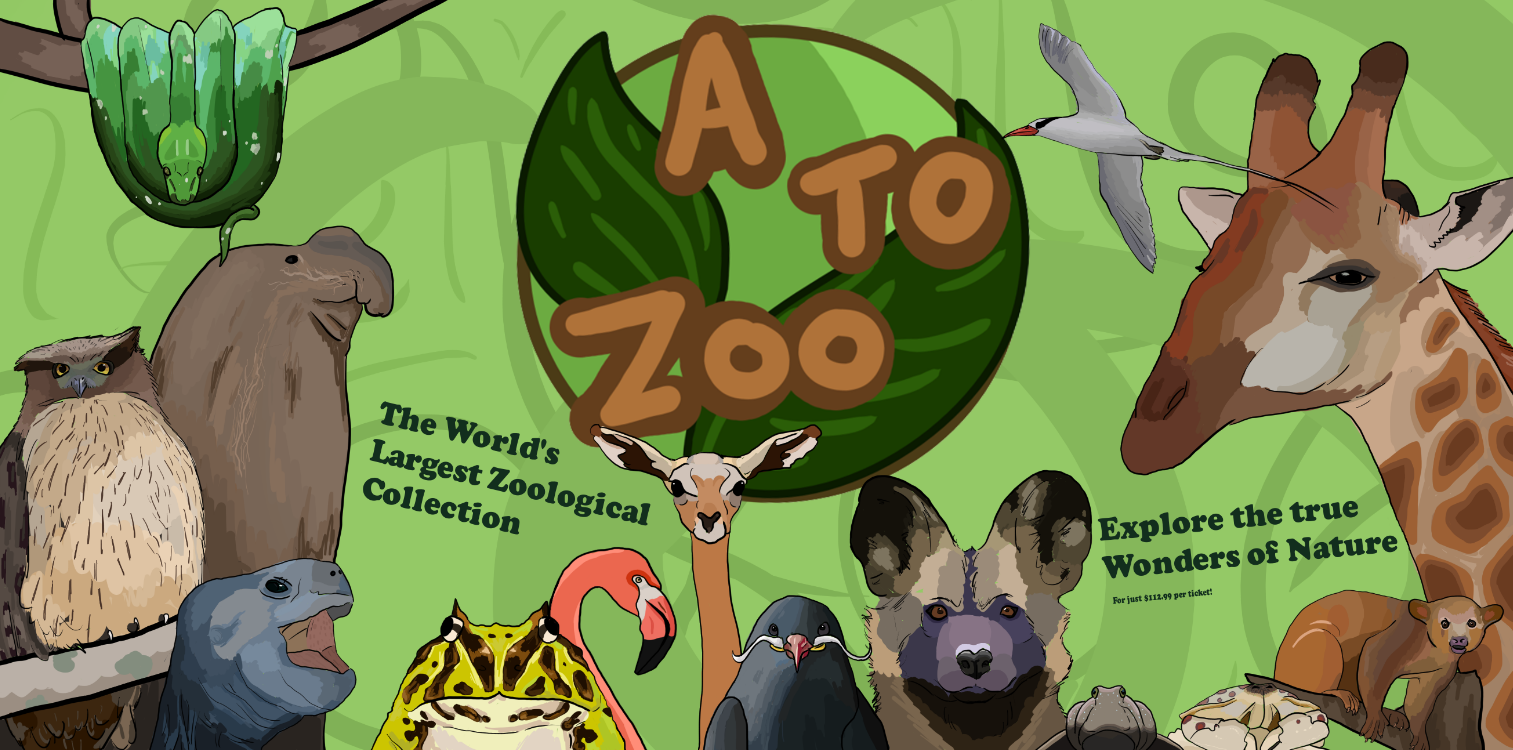

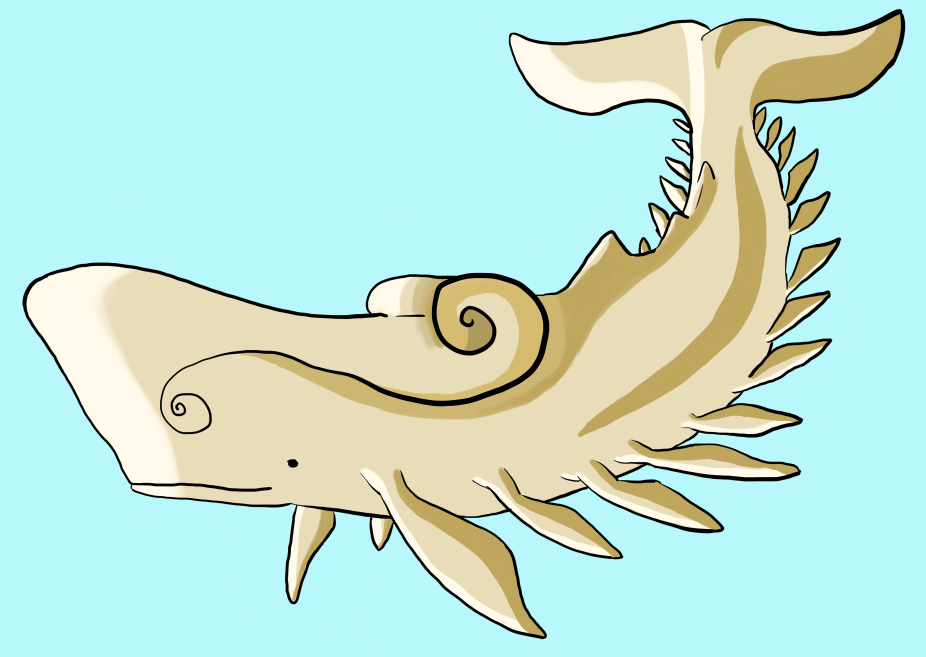
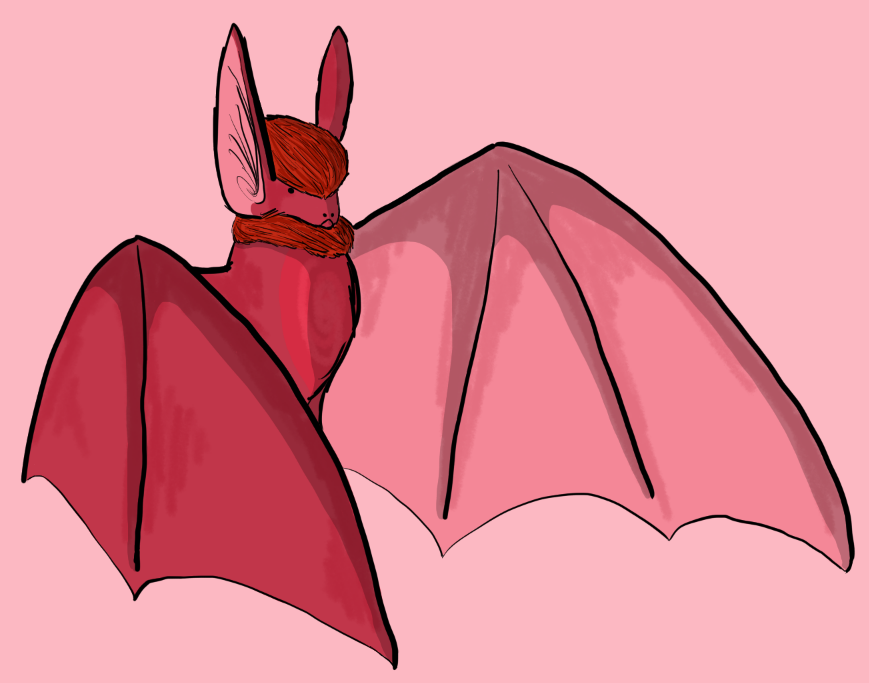
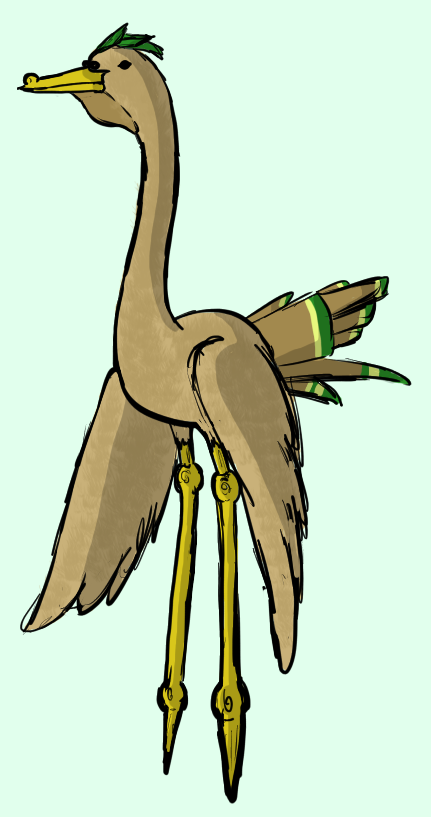
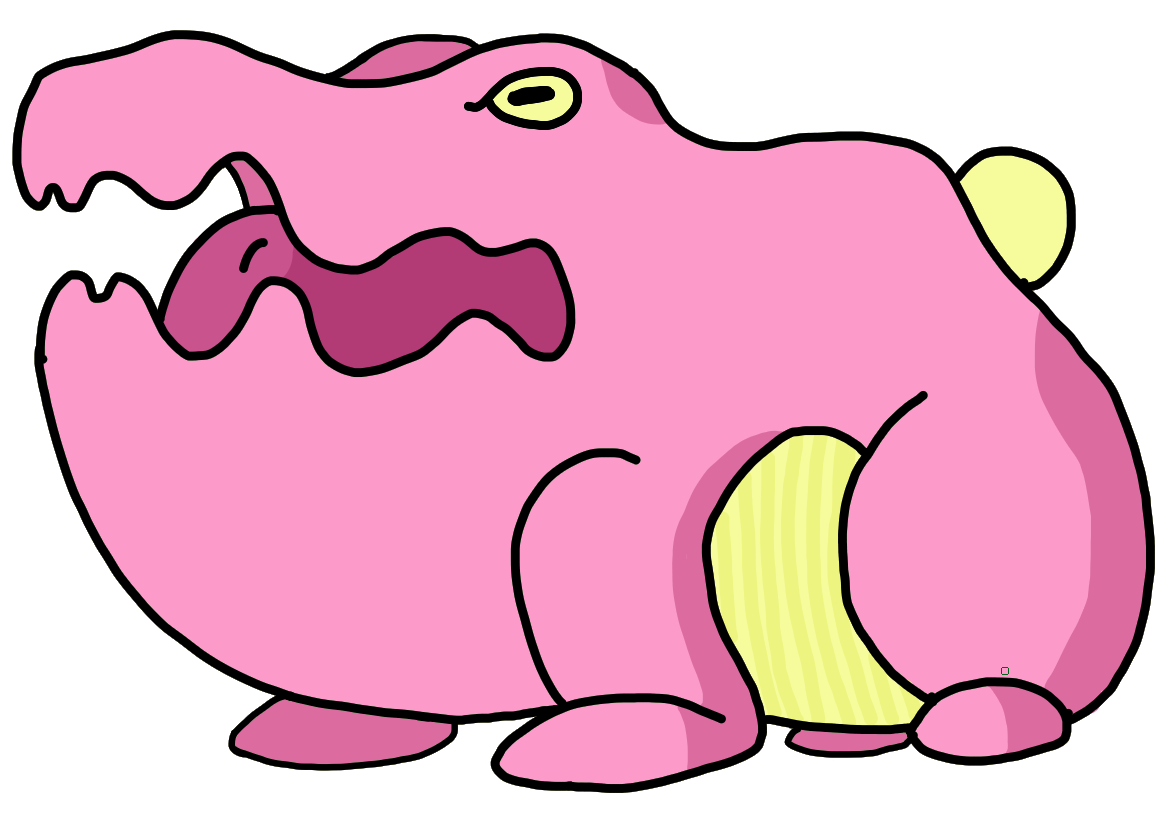

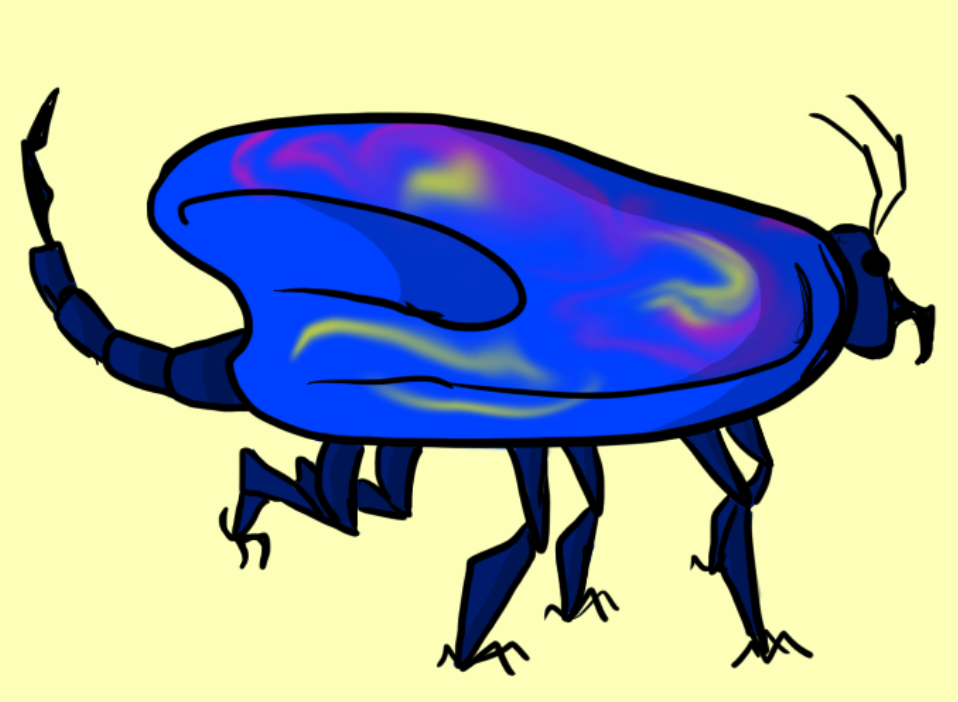




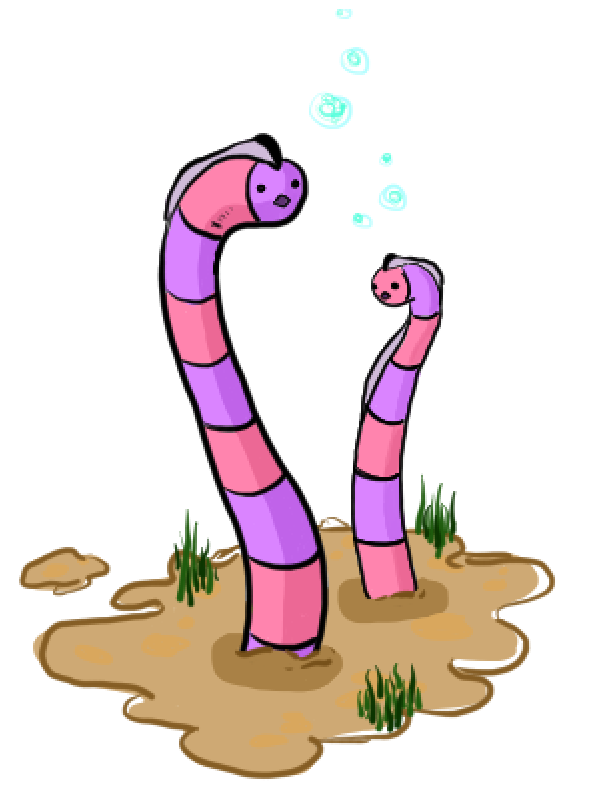
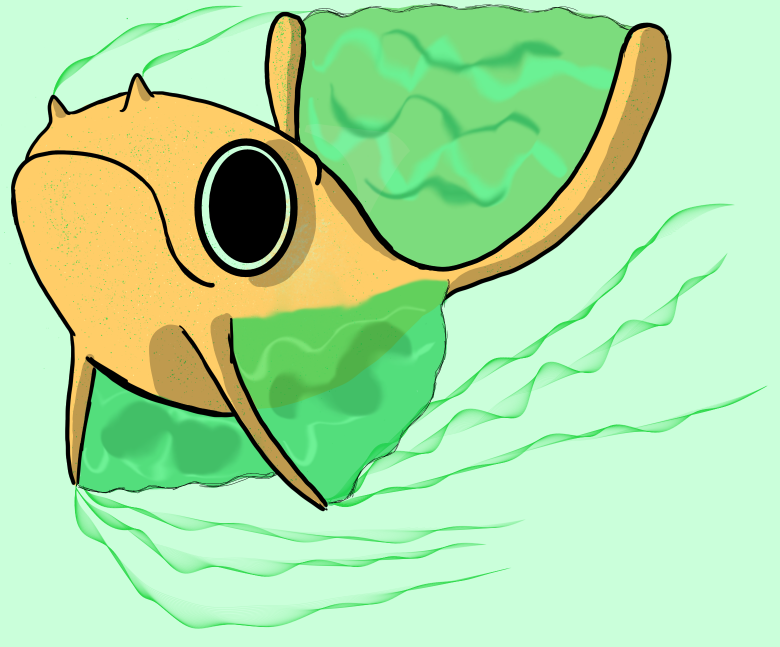
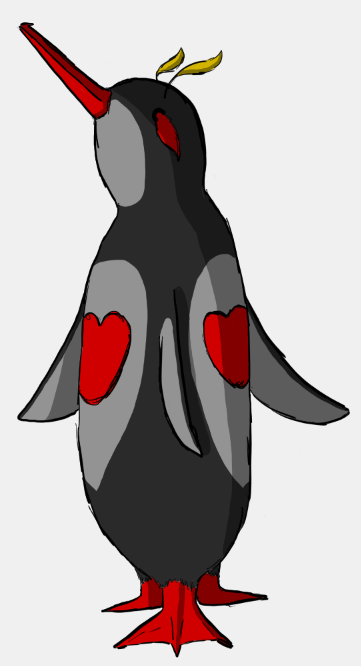

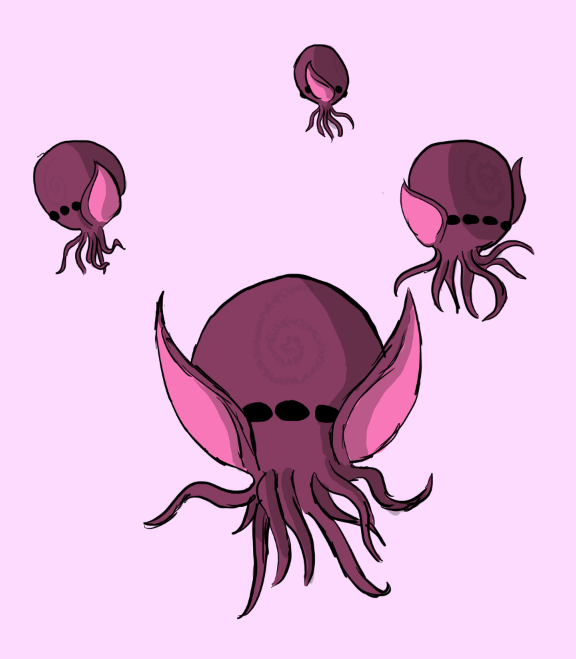
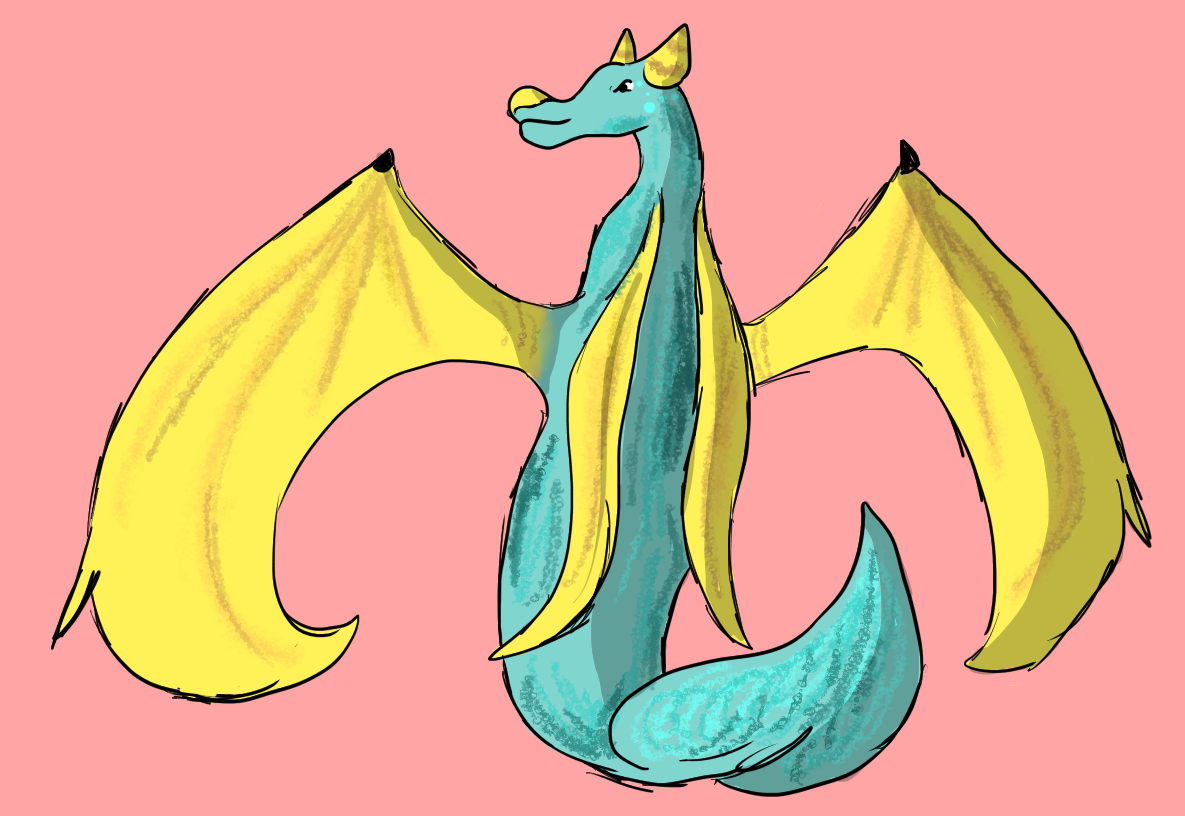
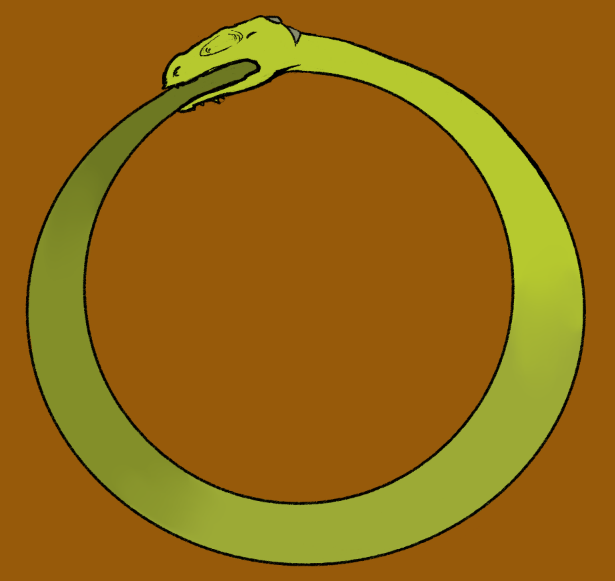
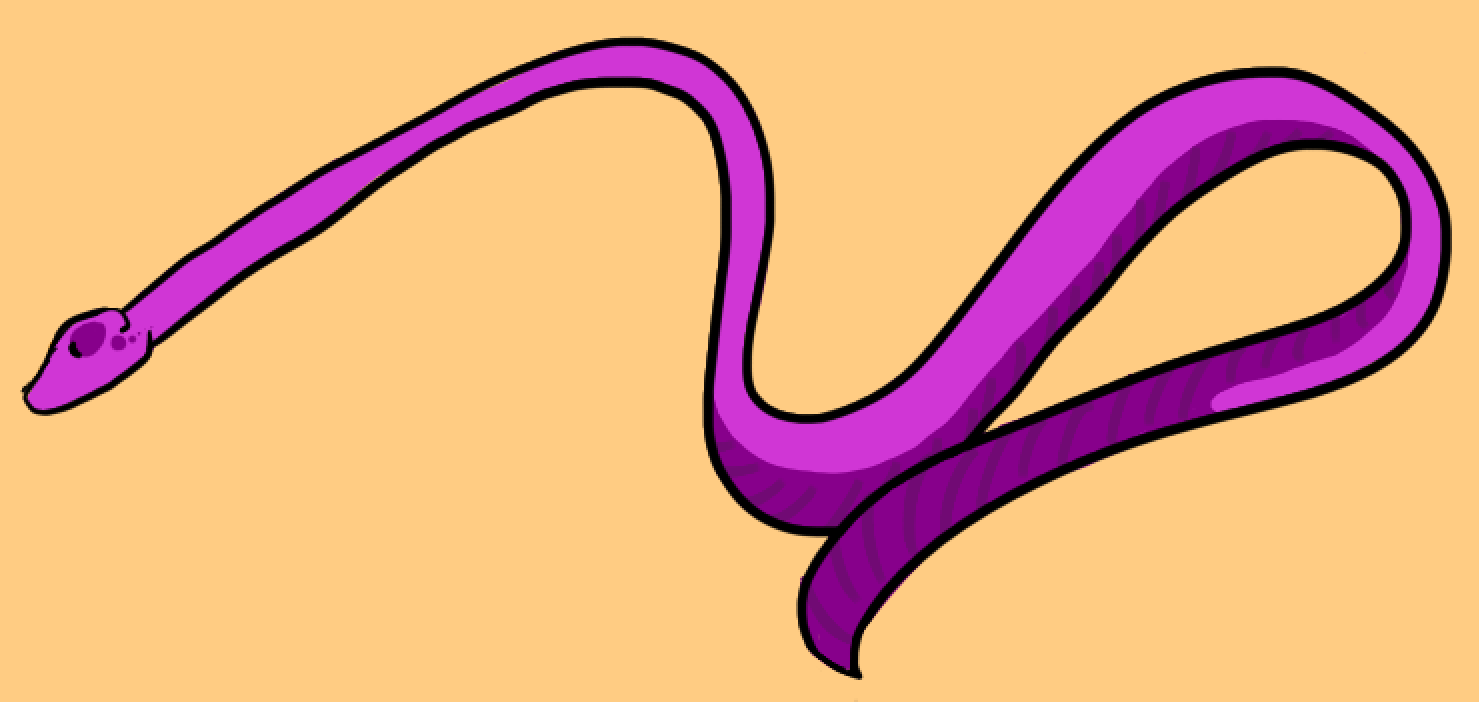
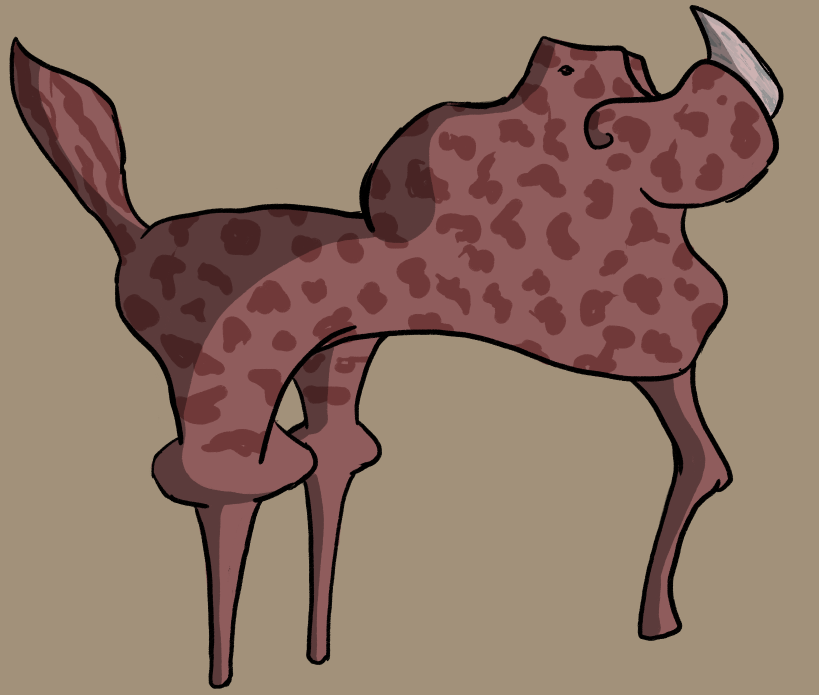

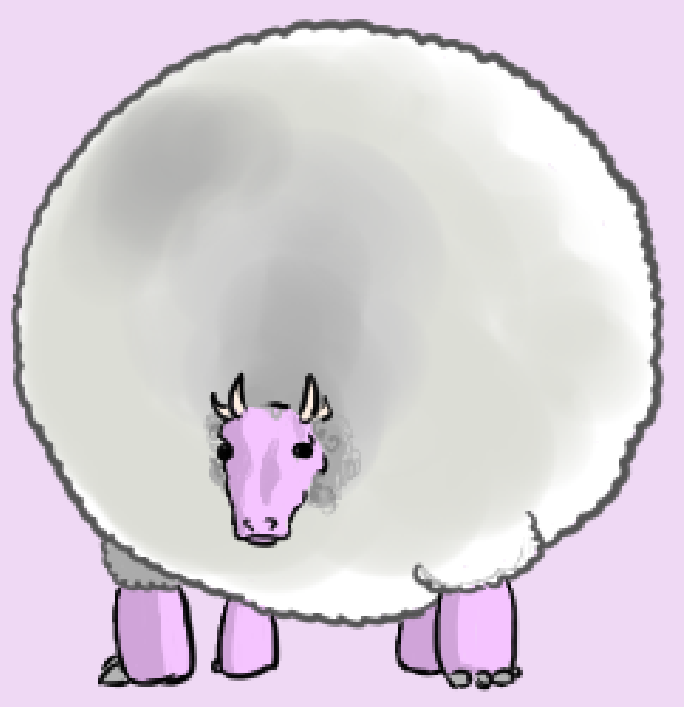





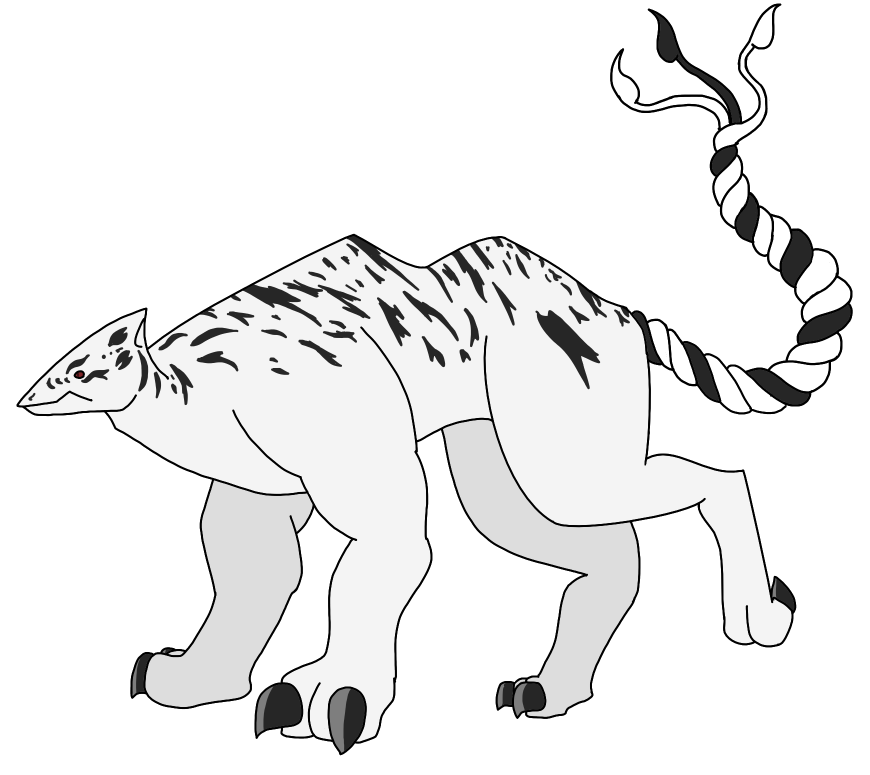
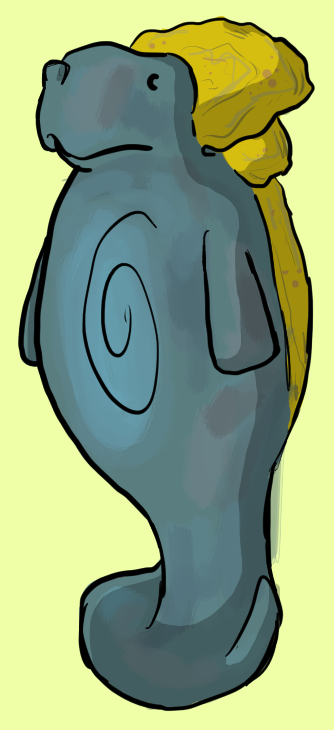
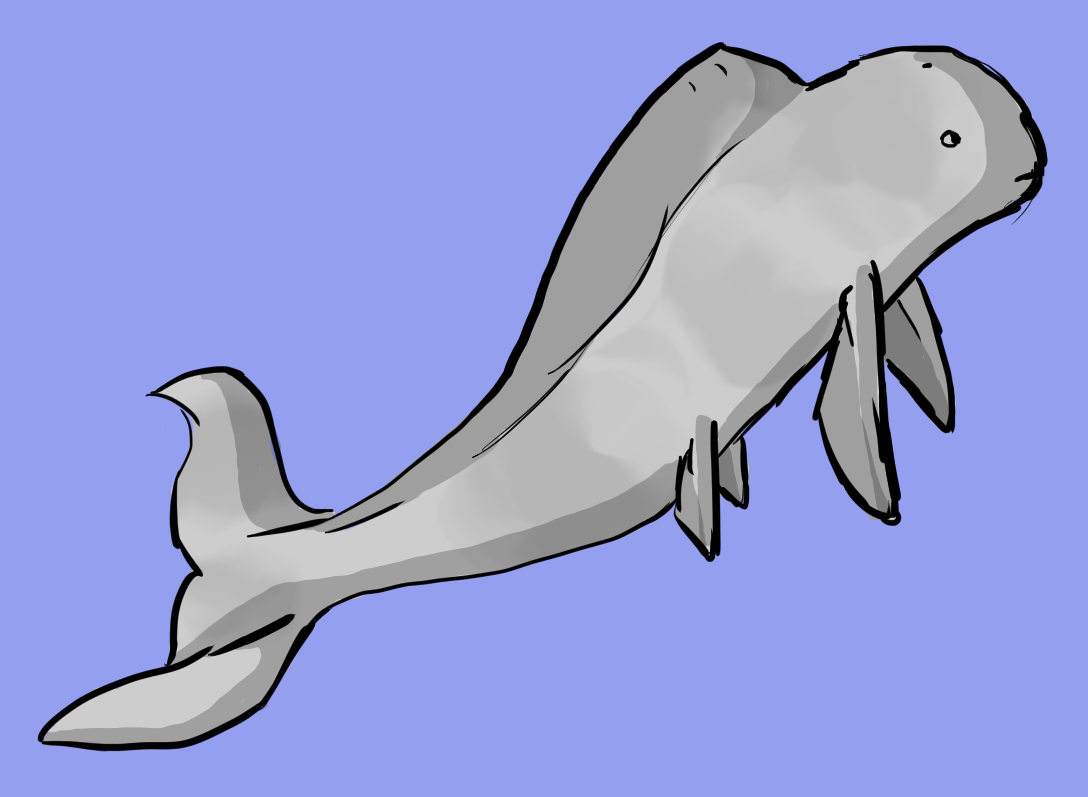



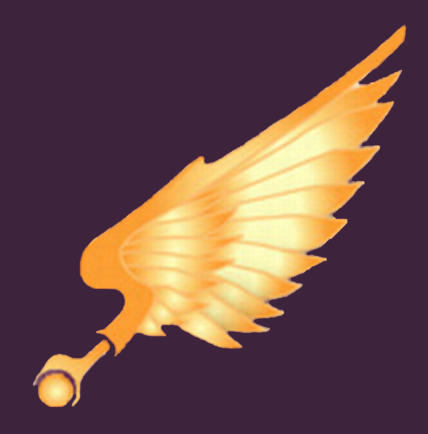
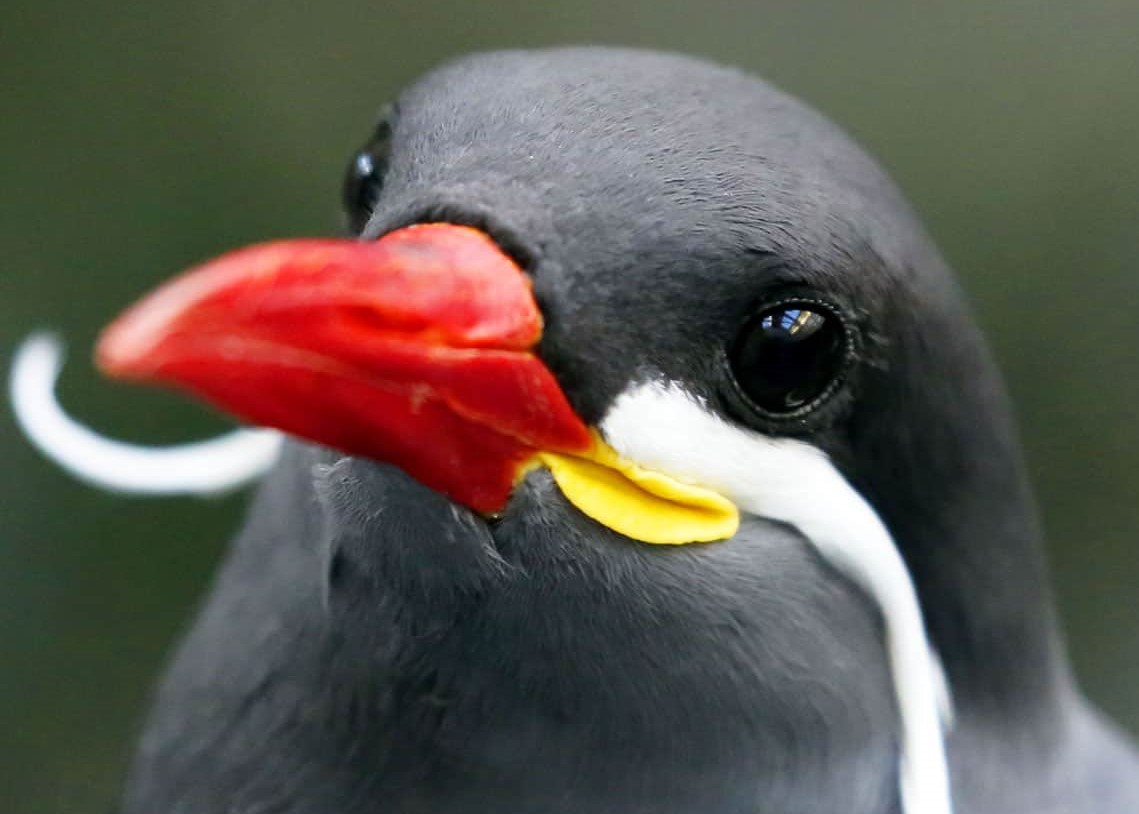


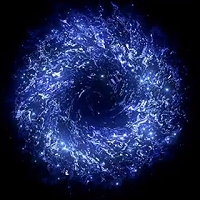
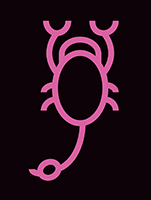
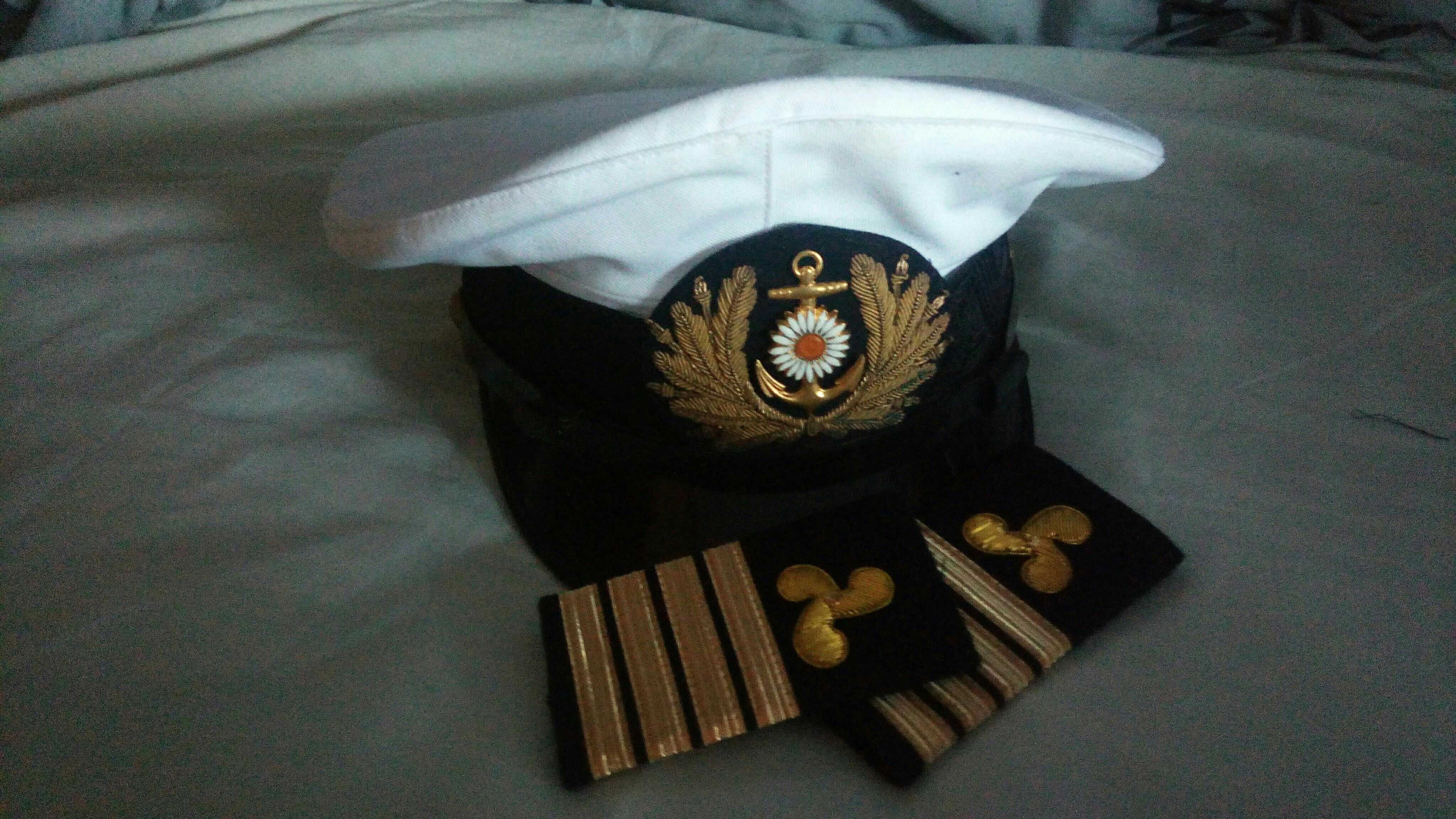
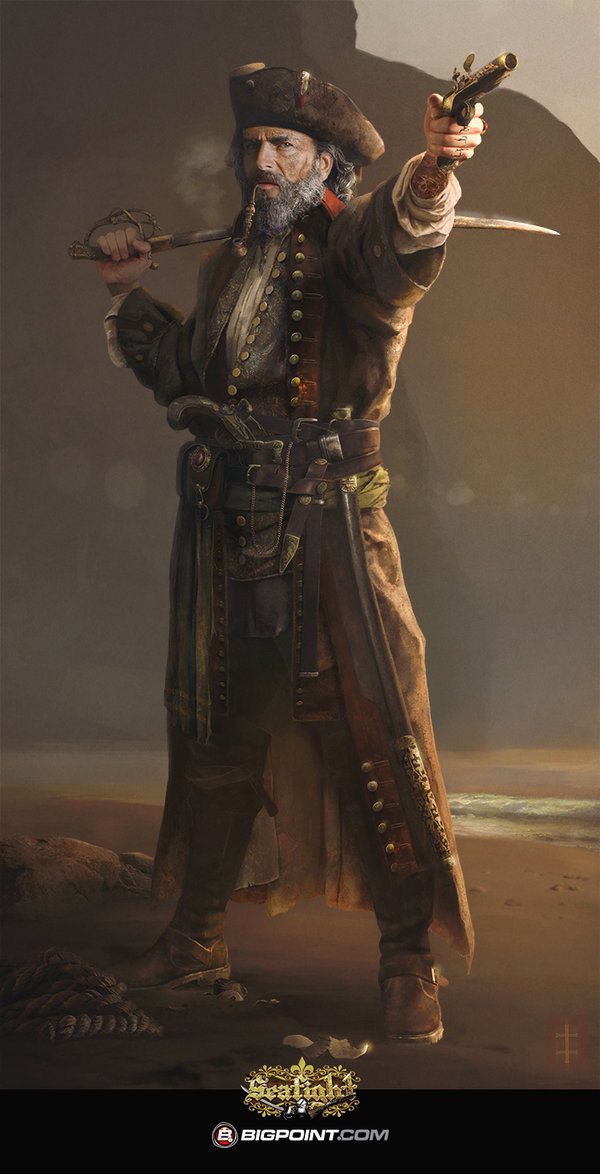
Oh my goodness. The killfish. The uvin. The time-stealer. The snow cow from the planet of Greg. Plump poofer? Fire biscuit?? Ned??? There's so much awesome here, I'm thrilled to sit down and read through all of it. But most importantly... please tell me the everai cat will be OK? :(
I hope you enjoy reading through it!! The everai cats will be okay, don't worry ^^